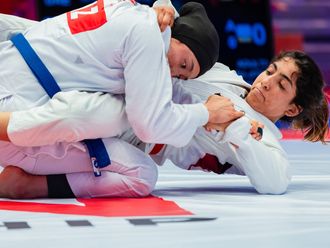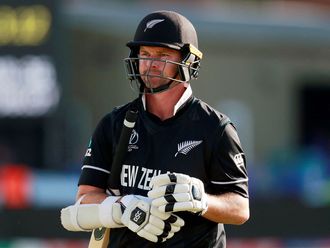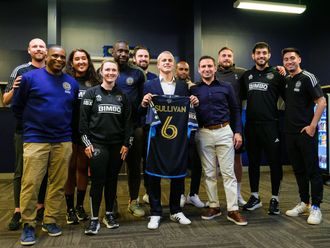A question that has been posed over and again within the industry during the past few years is: "What is happening to our teenage golfers?"
This sounds strange to you, I'm sure, so rest assured I am not suggesting that there is a weird phenomenon at play, such as the UAE's own version of the Bermuda Triangle.
The point is that we lose golfers once they hit the age of 12-13 - this is fact.
The number of teenage junior golfers registered in club lesson programmes or as members of golf clubs is pitiful in comparison to the great numbers of children aged between six and 10 that are actively learning the basics of the game.
As a result, the number of adult golfers we are generating who have come through our club's junior development programme is worryingly low.
For the UAE to develop a sustainable golf economy we have to develop new golfers - there is no getting away from this. With a transient expatriate population we will naturally lose and gain golfers. However, at the heart of the matter is the need to grow the game organically.
There is no question that a lot has been done for junior golf over the past 10-15 years.
The Junior Development Programme (JDP) launched by the national association (the EGF) in the '90s, has played a vital role in developing junior golf at a grassroots level.
Not to be outdone, the UAE golf clubs through their PGA professionals have also done a sterling job in attracting new blood to the game.
The statistics make for healthy reading when you look at the entry level numbers of juniors on programmes across the country. But somewhere down the line we lose them.
Over recent years the main driver behind this trend was the latent demand on our courses from the thriving local population in what was a booming economy.
Green fees were expensive, memberships were full and in general courses were full to the brim even in midweek.
As we enter a new decade, the picture is very different. However, this doesn't mean to say the trend will change the reality of our situation.
The UAE has a strong culture of youth development through sport and teenagers have a tremendous choice - you don't need to look very far to find first-class sporting academies.
Perhaps it's not something specific that the golf industry is doing wrong - perhaps this is just a sign of both the culturally strong ethos of multi-sport development and the intense focus on extremely high standards of education meaning there are just not enough hours left to participate in a time-consuming sport.
We do know that time constraints automatically put golf on a back foot, so perhaps the answer is not quite as straightforward as we think.
The answer is out there for sure - it needs to be found.
If you are a parent of a teenager or a teenager yourself - send me your thoughts.








